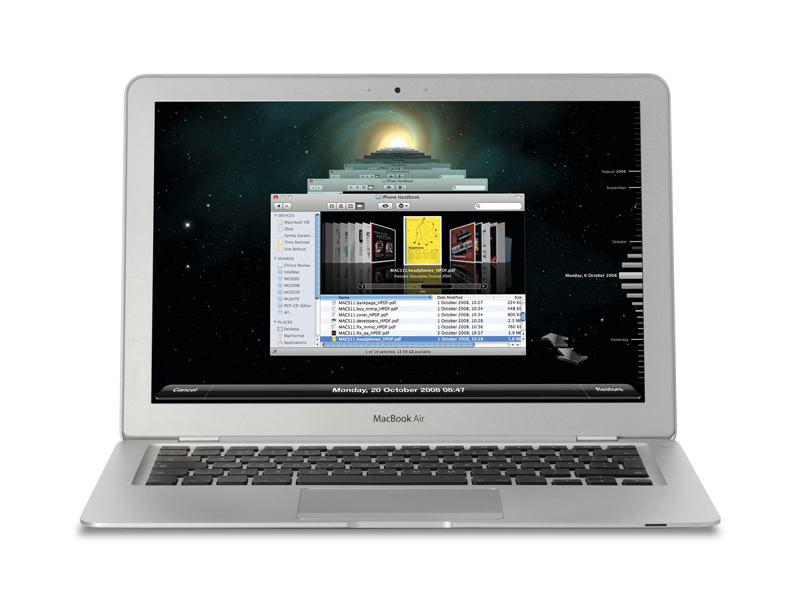Time Machine tips: how to back up OS X better
Choose when and what to back up on your Mac

You might use your Mac to keep your music and photo collections organised, upload a blog to your web space, or keep in touch with friends and family through email. However you use yours, most of us have some of our most cherished memories stored on our hard drives.
All of which means it's essential to keep those precious files backed up, just in case a hard disk failure strikes your system. Until the release of Mac OS X 10.5 (Leopard), backing up was left to the individual Mac user. With Leopard, however, Apple introduced Time Machine, which you might call 'backup for the rest of us'.
The first time you plug an external FireWire or USB 2.0 hard disk into your Mac you'll be asked if you want to use it as your Time Machine backup disk. If you do, click Use as backup disk, and Time Machine will automatically take over.
However, it's a good idea to find out more about how Time Machine ticks so that you can fine-tune it to your exact requirements. You might, for instance, want to change the interval between backups, or perhaps exclude certain folders from being backed up in the first place.
Disk formats
The first thing you should know about Time Machine is that the external hard disk you use needs to be formatted in a specific way in order to work properly; if you don't do this, backups might stop when the amount of data backed up reaches around the 10GB mark. Many manufacturers – LaCie and Western Digital, for instance – make a selection of products specifically targeted at Mac users that offer plug-and-play capability, while other products might be more suited to use with Windows, unless you reformat them first.
If you're at all unsure when buying a disk for use with Time Machine, check the specification. Once you have the disk you can use Mac OS X's Disk Utility to confirm that the disk will work properly and make changes to the formatting if needed. Here's how:
Sign up for breaking news, reviews, opinion, top tech deals, and more.
1) With the disk plugged into your Mac, launch Disk Utility (from Applications > Utilities).
2) On the left of the Disk Utility window you'll see a column that contains icons for all the disks attached to your Mac, either internally (your Mac's startup disk, for instance) or externally. Each disk has a
physical description – for instance, '111.8GB Fujitsu' – below which (and slightly inset) will be one or more icons describing the volumes into which the disk is subdivided. Click the main physical description of your intended backup disk, and look at the status information in the bottom right-hand corner of the Disk Utility window. If you're going to use the disk with a PowerPC Mac, the Partition Map Scheme should read Apple Partition Map; if you're using it with an Intel Mac it should say GUID Partition Table. If it reads Master Boot Record, the disk has been formatted for use with a Windows PC, and must be reformatted.
3) Next, turn your attention to the formatted volume listed below the main description of your external hard disk. Click its name and check the description of its format in the bottom-left corner of the Disk Utility window. This should read Mac OS Extended. If it reads MS-DOS (FAT32), the disk must be reformatted.
A guide to preparing and using disks with Time Machine follows.
Time Machine and AirPort Disks
If you're lucky enough to have an AirPort Extreme Base Station and Mac OS X 10.4.8 or later, you can connect a USB 2.0 hard disk to the Base Station for use as an AirPort Disk for sharing files across the wireless network. Unfortunately, if you have Leopard, you can't (at the time of writing, anyway) use your AirPort Disk with Time Machine. We understand that Apple regards this as a system bug and is working on a fix; it's certainly something we'd like to see – soon!